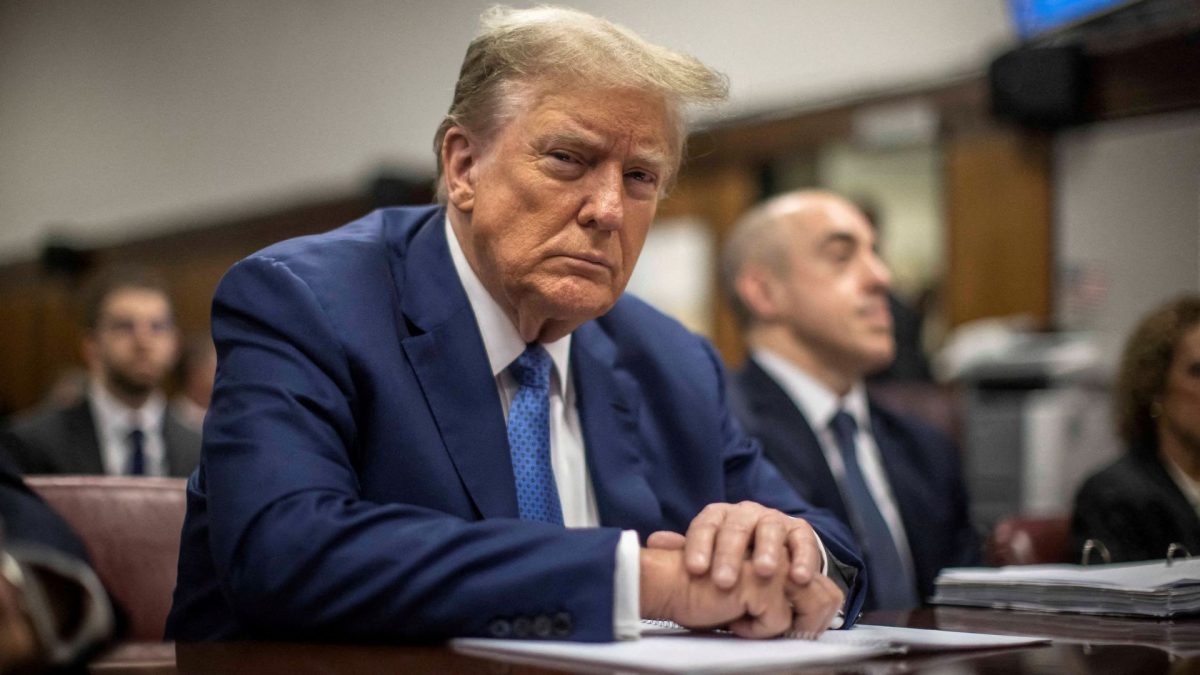Donald Trump is blaming China for the US opioid crisis – and is threatening to slap tariffs against Beijing.
The US President-elect took to his Truth Social website on Monday to announce a 25 per cent tariff on goods from China.
He also announced a separate 10 per cent additional tariff on goods from Beijing.
“I have had many talks with China about the massive amounts of drugs, in particular fentanyl, being sent into the United States – but to no avail,” Trump wrote.
“Representatives of China told me that they would institute their maximum penalty, that of death, for any drug dealers caught doing this but, unfortunately, they never followed through, and drugs are pouring into our country, mostly through Mexico, at levels never seen before. Until such time as they stop, we will be charging China an additional 10 per cent tariff.”
Trump has long accused Beijing of being complicit in the flow of fentanyl to the United States.
But why is this the case?
Let’s take a closer look:
US’ fentanyl problem
First, let’s briefly examine the US’ fentanyl problem.
According to the National Institute on Drug Abuse, fentanyl is a powerful synthetic opioid.
It is 50 to 100 times more powerful than morphine.
It is usually used to treat patients with severe pain – especially after surgery.
In its prescription form, fentanyl goes by Actiq, Duragesic, and Sublimaze.
The US has a growing problem with opioids – particularly illegally fentanyl.
Most common drug overdose deaths in the US now occur from synthetic opioids.
This fentanyl usually comes from labs.
It is sold in powder form, dropped onto blotter paper, put in eye droppers and nasal sprays, or even made into pills.
Fentanyl is often mixed with heroin, cocaine, methamphetamine, and MDMA.
As per The Guardian, around 75,000 people died from a fentanyl overdose in the United States in 2023.
“The nearly 200 Americans who continue to die every day from fentanyl overdoses represent an assault on the societal, political, and economic health of the United States,” a report from the Heritage Foundation think-tank has said.
The White House calls the epidemic “a scourge that has no geographic or political boundaries.”
Vanda Felbab-Brown, a senior fellow at the Brookings Institution, has called it the “most lethal drug epidemic ever in human history.”
The US Justice Department calls fentanyl the ‘deadliest drug threat the US has ever faced.’
The China connection
As per The Guardian, fentanyl first began flooding into the US from China around a decade ago.
The two countries were cooperating on fentanyl until a few years ago.
In 2019, China, at the US ’ request, put all forms of fentanyl on a list of controlled substances.
Then, Nancy Pelosi visited Taiwan in 2022.
The visit of Pelosi, at the time, angered Beijing – which responded by ending several channels of communication with the US, including counter-narcotics co-operation.
In 2020, the US Drug Enforcement Administration said that China was the “primary source of fentanyl and fentanyl-related substances trafficked through international mail.”
Today, China is the dominant source of chemical precursors used by Mexican cartels across the border who produce fentanyl.
This, as Chinese money launderers have become key players in the international drug trade, US authorities say.
Ironically, there have been some positive developments of late.
According to The New York Times, Chinese officials in September expanded the list of precursor chemicals used in making the drug.
The two nations also agreed to also to work together on money laundering, as per The Guardian.
Still, hostility toward China’s government has taken root on Capitol Hill, with both Democrats and Republicans urging trade actions to punish Beijing for what some believe is a deliberate effort to destabilise the United States with fentanyl.
“US adversaries are establishing a new avenue of asymmetric warfare against the American people through which they can launch destabilizing actions against the United States,” the Heritage Foundation report warned.
Trump’s tariffs on China over narcotics might just be an opening volley. Howard Lutnick, Trump’s pick to run the Commerce Department and oversee the Office of the US Trade Representative, said in a podcast interview in October that “China is attacking America” with fentanyl and suggested that Trump might levy tariffs as high as 200 per cent on China.
But some experts remain sceptical about the impat of Trump’s tariffs.
“An imposition of tariffs is not going to do anything regarding the flow of fentanyl,” Felbab-Brown told The New York Times. “In fact, it might undermine the counternarcotics cooperation that the US and China have been doing in 2024 and that came after no cooperation for over two years.”
China hits back
A spokesperson for the Chinese Embassy in Washington cited numerous steps that China has taken to prevent illegal production, trafficking and abuse of fentanyl since talks with the Biden administration resumed.
The embassy warned that China would respond if the US takes a more combative posture.
“Sanctions, smears and slander against China will only undermine the foundation of China-US counternarcotics cooperation,” the embassy said in a statement. “China firmly opposes the US’ arbitrary use of unilateral sanctions and will resolutely safeguard its legitimate rights and interests.”
Beijing insists fentanyl is a US problem.
“The root cause of the overdose lies in the US itself, which calls for more effective measures from the US government,” China’s foreign ministry spokesperson, Mao Ning, was quoted as saying by The Guardian.


)

)
)
)
)
)
)
)
)



